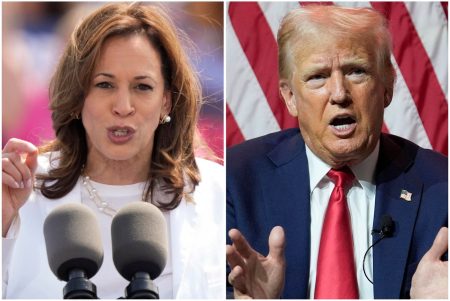Our writers and editors used an in-house natural language generation platform to assist with portions of this article, allowing them to focus on adding information that is uniquely helpful. The article was reviewed, fact-checked and edited by our editorial staff prior to publication.
Key takeaways
- When you deposit money into a bank, the bank doesn’t keep all of it in cash reserves. Instead, they lend it to other parties to earn interest and make a profit.
- Banks can lend money in various ways, such as consumer or business loans, government bonds and credit cards.
- When a bank’s cash reserve isn’t enough to meet customer withdrawals, it can lead to a bank run and ultimately the bank’s failure. However, the government insures deposits of up to $250,000 per depositor, per institution and account ownership type.
When Silicon Valley Bank collapsed on March 10, 2023, the Federal Deposit Insurance Corp. (FDIC) had to step in to make depositors’ funds available. Since the bank didn’t have enough money to meet depositors’ account balances, you might be wondering where the money you deposit in a bank goes and whether it’s safe.
In short, banks are intermediaries between depositors and borrowers. The money you deposit into a bank is then lent out by the bank in the form of a variety of loans and securities.
But the process, when broken down, is often much more complicated than a bank simply taking deposits and lending them out. The bank has a certain amount in cash reserves. Plus, it can choose to lend out money in several different ways.
The bank lending process
Only a small portion of your deposits at a bank are actually held as cash. The rest of your money (the majority of the bank’s assets) is invested by the bank into vehicles such as consumer or business loans, government bonds and credit cards. Borrowers have to pay the bank back with interest. This process, in which banks distribute deposits as loans, is called financial intermediation.
Banks make money by charging more on loan interest than they pay out to depositors. For example, let’s say you deposit $500 into a savings account with a 4 percent annual percentage yield (APY). You’d make $20 in interest after a year, which the bank pays to you. Meanwhile, the bank might lend out $400 of your deposit as a personal loan with a 10 percent annual percentage rate (APR). The bank makes $40 off of that loan in a year. Because it paid $20 to you in interest, the bank keeps the other $20 as profit, which is used to pay its shareholders.
Consumer or business loans aren’t the only way banks lend out money. They may also invest deposits in safe investments, such as Treasury bonds — a type of investment vehicle in which money is lent out to the government and the government pays interest to the lender.
Where does your bank lend your money?
Although you don’t directly choose where your deposits are invested, you might be concerned about how your bank chooses to invest your money, especially if you care about finding a bank that aligns with your values.
If you’re concerned about environmental impact, for example, you could look for a bank that lends to environmental initiatives and avoids lending to things like fossil fuels. One way to find an environmentally friendly bank is to look for B-Corp or GABV certifications, which both require that a bank meets certain standards to reduce negative environmental impact.
Another helpful resource for finding out how your bank uses your deposits is Mighty Deposits, a searchable database that organizes public data about banks’ investments. You can search a specific bank on the site and see a breakdown of where it lends, or you can search by specific criteria, such as “above average in small business lending,” if there’s a particular issue you’re passionate about supporting.
How much do banks need in cash reserves?
The Federal Reserve sets regulations for banks to keep a certain amount of liquid assets — called the bank’s cash reserve. Cash reserves ensure that banks can pay out withdrawals.
However, as of March 26, 2020, the Fed eliminated all cash reserve requirements tied to deposits for banks. Banks are still required to maintain a 10% asset reserve against their liabilities, which can consist of cash as well as other highly liquid assets such as Treasuries. This provides banks more flexibility in funding withdrawals and maintaining liquidity, but they’re still required to hold a portion of their assets in reserve.
When a bank doesn’t have enough cash to meet demand
Since banks lend out most of their deposits, the whole balance you see on your account isn’t physically there. When you withdraw money, it’s funded by the bank’s cash reserve, or banks can sell securities if their cash reserve isn’t enough to meet withdrawal demands.
However, there are instances when depositors withdraw their money en masse and a bank does not have enough in its reserve to pay its customers. This effect is referred to as a bank run.
That’s also what leads to banks’ failures — and this includes the collapse of Silicon Valley Bank (SVB). SVB was a bank with much of its assets held in Treasury bonds. For a number of reasons — including the diminished value of those bonds due to Fed rate hikes over the past year — the bank was forced to sell a significant portion of its bonds to meet withdrawal demands, and it sold those bonds at a $1.8 billion loss.
Depositors responded to the massive loss by withdrawing their funds all at once, and SVB didn’t have the means to meet all of its customers’ withdrawal requests. What happened as a result is typical for when a bank’s reserve fails to meet customer demand: Regulators close the bank down and the FDIC takes over its assets.
Bottom line
When you deposit money into a bank, the bank doesn’t keep that money in cash. Instead, it lends out deposits to consumers, businesses and the government to earn interest and make a profit.
Though banks can typically use a cash reserve or sell securities to fund withdrawals, there are cases in which withdrawals overwhelm the bank’s cash reserve and it runs out of funds and is forced to close down. But that doesn’t mean your money is lost — up to $250,000 of your deposits, per institution and account ownership type, are insured by the government. You can use the FDIC’s Electronic Deposit Insurance Estimator to find out how much of your deposits is insured.
—Bankrate’s Sheiresa McRae Ngo updated this article.
Read the full article here












